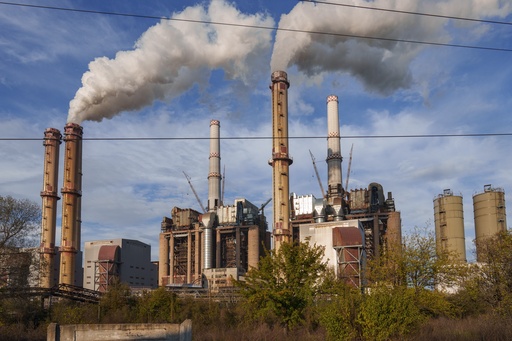
BAKU, Azerbaijan — On the first day of the United Nations climate conference, leaders made significant, albeit controversial, decisions regarding the proposed measures to mitigate emissions produced by coal, oil, and gas after almost a decade of discussions. This element, known as Article 6, was established as part of the Paris Agreement in 2015, aimed at fostering collaborative efforts among nations to curtail climate-disrupting pollution. A cornerstone of this initiative is the system of carbon credits, which allows countries to offset their greenhouse gas emissions by mitigating emissions elsewhere.
The quick adoption of Article 6 drew criticism from various climate justice advocates, who argued that the reliance on carbon markets may enable leading polluters to evade responsibility while adversely affecting vulnerable communities and the environment. COP29, the official designation for this year’s summit, has convened global leaders to examine strategies for addressing the climate crisis. Scientific consensus underscores that the release of greenhouse gases primarily from fossil fuel combustion is exacerbating extreme weather events like droughts, floods, hurricanes, and heatwaves.
To delineate Article 6’s purpose: it was first introduced during the 2015 Paris climate talks, where countries aimed to cap global warming at 1.5 degrees Celsius (approximately 2.7 degrees Fahrenheit) relative to pre-industrial levels. The article is designed to provide a framework through which nations and corporations can trade emissions reductions, thereby limiting additional carbon pollution entering the atmosphere. The mechanism is anticipated to foster carbon trading markets, allowing nations with higher emissions to compensate by purchasing carbon credits from those with lower emissions.
Article 6 delineates two primary pathways for trading emissions reductions. The first permits bilateral agreements between countries to establish their individual trading regulations. Several nations have initiated such arrangements, including alliances like Singapore with the Philippines, and Costa Rica with Sri Lanka, among others. The second pathway involves establishing a globally recognized market governed by the United Nations, open for trading by any entities interested in purchasing credits.
Isa Mulder, a specialist in global carbon markets from Carbon Market Watch, stated that the fundamental aim of Article 6 is to encourage nations to find the most cost-effective means of reducing emissions. By facilitating the trade of carbon credits, the initiative seeks to render the global reduction of pollution more economical and efficient. However, the path to Article 6’s implementation has been fraught with contention, leading to numerous delays. Negotiations at COP28 faced obstacles due to disputes surrounding transparency, the criteria for tradeable credits, and the definition of valid carbon removal credits.
Concerns have arisen that these credit trading schemes might occur on Indigenous lands without the consent of local communities, raising significant human rights issues. The UN Secretary-General, Antonio Guterres, implored negotiators to reach a consensus on the establishment of fair and effective carbon markets while avoiding practices like greenwashing or land appropriation.
As for the potential impact on carbon pollution reduction, Article 6 is hoped to motivate countries towards collaboration in achieving their climate targets. Nations could earn carbon credits through environmental projects intended to fulfill their climate objectives, including forest preservation or the decommissioning of coal plants. Consequently, high-emission entities could then purchase these credits, permitting them limited leeway to emit greenhouse gases while funding environmental initiatives.
Each carbon credit corresponds to one ton of carbon dioxide or its equivalent in other greenhouse gases, promoting practices that either mitigate such emissions or advance the adoption of renewable energies. The financial proceeds from these carbon credits could then be funneled into local projects. The value of carbon per ton would fluctuate in the marketplace, suggesting that rising prices could subsequently enhance the funding available for new green ventures.
In carbon markets, countries that succeed in reducing emissions may sell carbon credits, utilizing the revenue for clean energy development projects—from solar panel installations to public transportation electrification. Nonetheless, this approach raises skepticism regarding its effectiveness and parallels perceived shortcomings of earlier agreements, such as the Kyoto Protocol from 1997, which faltered after the withdrawal of the U.S. administration.
Looking ahead to the climate talks in Baku, Monday’s decisions marked an early stride towards finalizing Article 6, a priority for the COP29 presidency in the coming year. However, additional consensus is required regarding bilateral trading regulations and the specifications of the UN-governed market.
Upon finalization, estimates suggest that Article 6 could reduce the expenditures associated with executing national climate agendas by up to $250 billion annually. COP29 President Mukhtar Babayev emphasized that Article 6 has the potential to be transformative, channeling resources to developing nations. However, voices of concern persist, particularly surrounding the method’s formulation.
David Nicholson, Chief Climate Officer at Mercy Corps, reminded stakeholders that community involvement and ownership of these initiatives are critical for respect and inclusion. He highlighted worries that the current framework may fall short of providing necessary human rights protections and could detract from the critical financial commitments needed for genuine climate action. If unresolved, this issue may lead to a scenario where carbon trading substitutes essential climate financing efforts.
